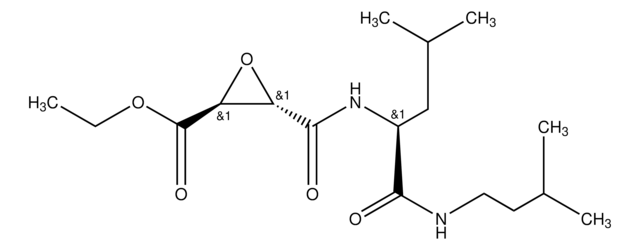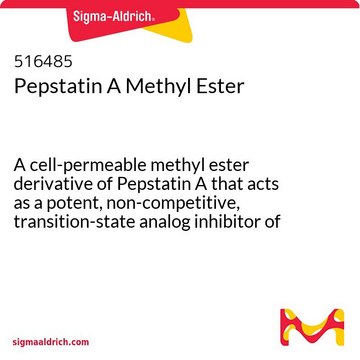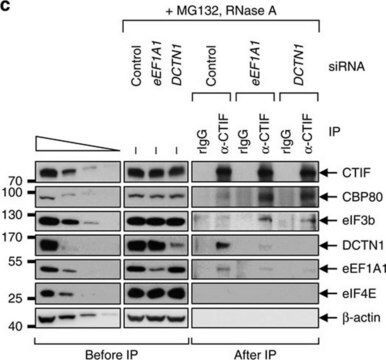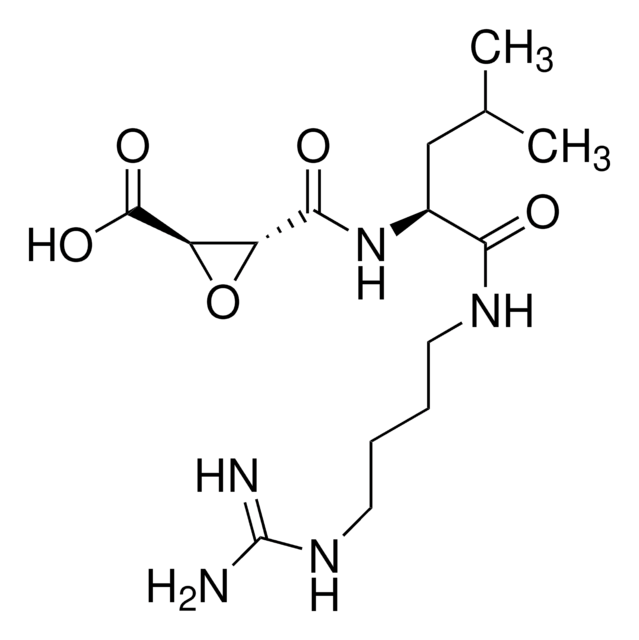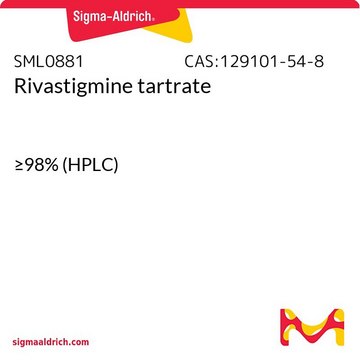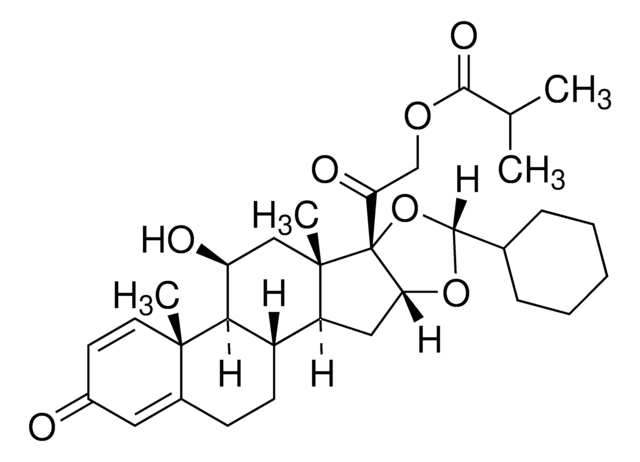Kluczowe dokumenty
SML0057
Camostat mesylate
≥98% (HPLC)
Synonim(y):
4-[[4-[(Aminoiminomethyl)amino]benzoyl]oxy]benzeneacetic acid 2-(dimethylamino)-2-oxoethyl ester methanesulfonate; FOY 305; FOY-S 980; Foipan mesylate
About This Item
Polecane produkty
Próba
≥98% (HPLC)
Formularz
powder
kolor
white to tan
rozpuszczalność
H2O: ≥24 mg/mL
inicjator
Novartis
temp. przechowywania
2-8°C
ciąg SMILES
CS(O)(=O)=O.CN(C)C(=O)COC(=O)Cc1ccc(OC(=O)c2ccc(NC(N)=N)cc2)cc1
InChI
1S/C20H22N4O5.CH4O3S/c1-24(2)17(25)12-28-18(26)11-13-3-9-16(10-4-13)29-19(27)14-5-7-15(8-6-14)23-20(21)22;1-5(2,3)4/h3-10H,11-12H2,1-2H3,(H4,21,22,23);1H3,(H,2,3,4)
Klucz InChI
FSEKIHNIDBATFG-UHFFFAOYSA-N
Zastosowanie
Działania biochem./fizjol.
Cechy i korzyści
Hasło ostrzegawcze
Warning
Zwroty wskazujące rodzaj zagrożenia
Zwroty wskazujące środki ostrożności
Klasyfikacja zagrożeń
Aquatic Acute 1 - Eye Irrit. 2 - Skin Irrit. 2 - STOT SE 3
Organy docelowe
Respiratory system
Kod klasy składowania
11 - Combustible Solids
Klasa zagrożenia wodnego (WGK)
WGK 3
Temperatura zapłonu (°F)
Not applicable
Temperatura zapłonu (°C)
Not applicable
Wybierz jedną z najnowszych wersji:
Certyfikaty analizy (CoA)
Nie widzisz odpowiedniej wersji?
Jeśli potrzebujesz konkretnej wersji, możesz wyszukać konkretny certyfikat według numeru partii lub serii.
Masz już ten produkt?
Dokumenty związane z niedawno zakupionymi produktami zostały zamieszczone w Bibliotece dokumentów.
Klienci oglądali również te produkty
Nasz zespół naukowców ma doświadczenie we wszystkich obszarach badań, w tym w naukach przyrodniczych, materiałoznawstwie, syntezie chemicznej, chromatografii, analityce i wielu innych dziedzinach.
Skontaktuj się z zespołem ds. pomocy technicznej
